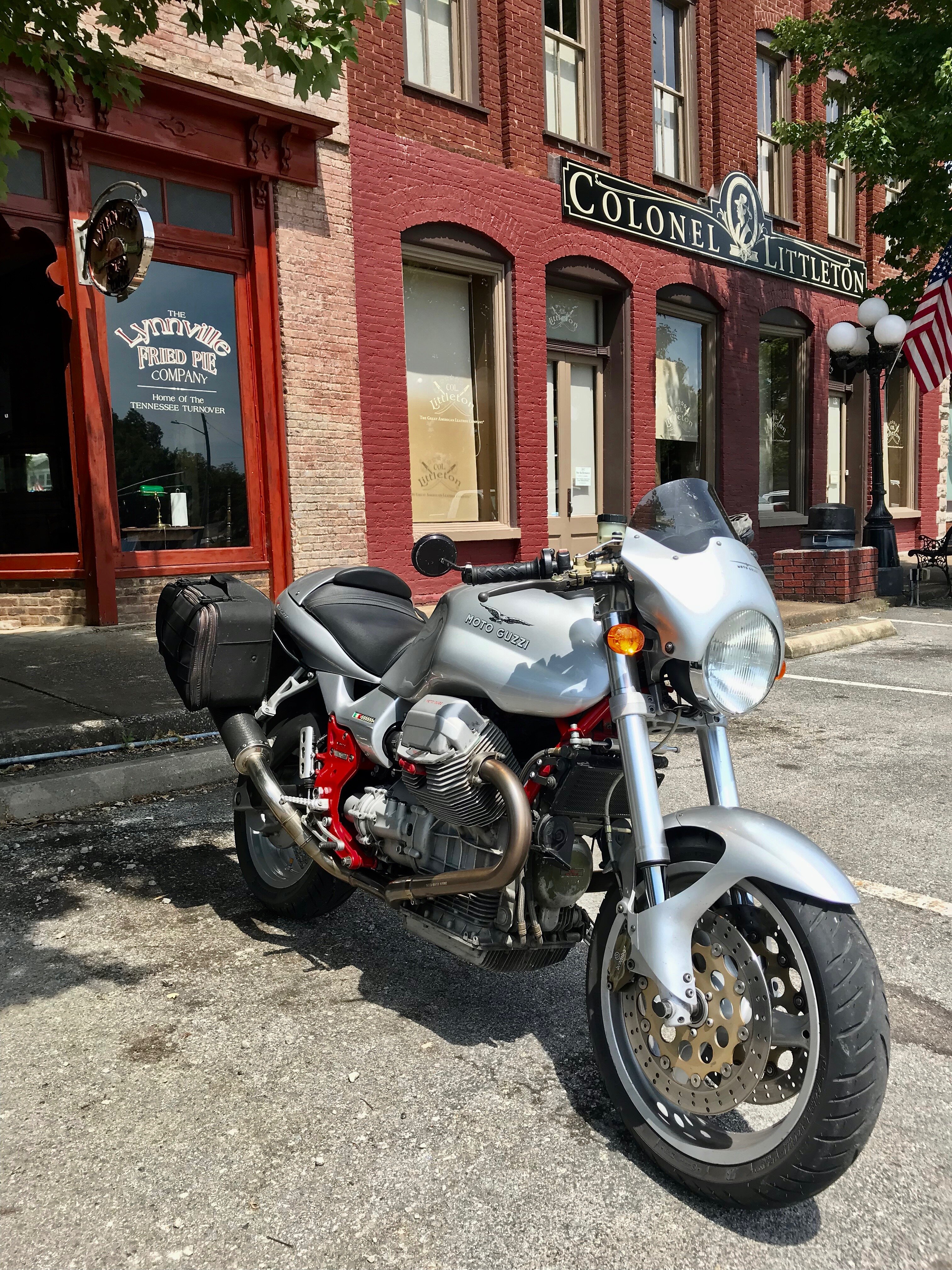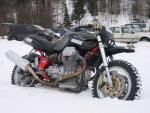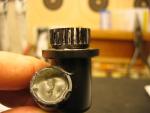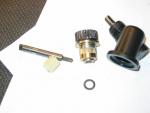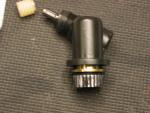-
Posts
19,846 -
Joined
-
Last visited
-
Days Won
1,123
Content Type
Profiles
Forums
Events
Gallery
Community Map
Everything posted by docc
-
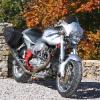
!Update 10/15/11! Shifting still bad .Almost killed me !
docc replied to mznyc's topic in Technical Topics
I'm not the Scura clutch expert. But, I do remember some issues with the single plate clutch and its flywheel. Serious enough not to ignore the early warning signs. Sure, could be spring/ boss size stuff, but let's look further into the clutch possibilities. As we say here in the South, "don' wantcha gittin kilt . . ." Even if it means a clutch job . . . -
Ouch! What we call here: "frost heave." And right in the sweet spot of a beautiful curve! Dangerous women these curves!
-
So, I remember a thread on there being a washer between the right side of the rear drive (next to the nefarious needle cage) and the right swingarm. I've never had one, or it fell off in the floor at some early service. So, I thought I would put one in and ordered the bad boy up (GU37359005); delivered as "Rosetta" at a whopping 13.18 USD. So, I'm glad to have it and I'll get it installed as there is a little space there otherwise and I'd like to think it will protect the flimsy needle cage. I guess if I knew the actual dimensions, I could have bought one locally for 75 cents. Maybe the MG part has a Rockwell hardness of 60? Still, I am devoted to the upkeep of this bike and the support of the remaining dealers. Bless them, indeed. I wonder, though, at one of the entries on the factory packing slip: "tipo: NOR" Do I have have a real and genuine Norwegian washer? Wow, then, it's worth the thirteen bucks to keep those guys in Vodka. Jeez, a thirteen dollar washer - what an idiot!
-

!Update 10/15/11! Shifting still bad .Almost killed me !
docc replied to mznyc's topic in Technical Topics
Do Scuras really have *clutch* issues? Could that be "it?" -
Frozen what? It was over 90 degrees (35C) here today, but I can smell winter in the air. (beware of the *hooters* link!)
-
I smell winter on the air . .
-
The rear drive vent is in top of the rear drive - easy to see. the gear box vent is between the output shaft and the clutch slave cylinder - not easy to see. The rear wheel spindle torques to 120 NM (from the "drive side") I don't see how you have "unscrewed" the brake block without taking out the bolt? The block should just slide off.
-
-

!Update 10/15/11! Shifting still bad .Almost killed me !
docc replied to mznyc's topic in Technical Topics
Simplest thing could be your shift lever is striking the sideplate ("pork chop") on the up shift. Second simplest is to be certain your clutch action is complete: fresh fluid and no excessive play at the lever (indicating a broken master cylinder spring). Never heard of realigning the wheel after removal. Well, ok, after removal of the swingarm, sure. -
Welcome back! Beautiful black LeMans! (What year?)
-
No, I really believe I overfilled the drive and that damaged the seals. A couple seasoned Guzzi riders I know keep their level about an ounce (30 ml) low to ease the pressure. I ran RLSPH for about 15000 miles before the trouble started. I feel certain that replacing the inner seal (already did the outer) is the real solution and I suspect the leak will eventually return even with the "normal" G-5. Shoot, it may come back when I add the moly. I think I'll wait til after the next couple out of state rides to test that theory!
-
For the fuel light, look at the wires from the sensor on the lower side of the tank on left. They do commonly break there. The bulbs will darken over time as the metal from the filament "plates" the inside of the glass. Much brighter usually on replacement!
-
Right, then: 1) You'll be amazed the response she has to a proper tune-up (valve adjustment, TPS, throttle body synch. Don't worry about ECU mods until you have a fine tune on her. 2) RedLine Shockproof Lightweight "blue" has done very well in my gearboxes. Cleaning, shimming and lubricating the foot shift mechanism (external) is also good medicine. It's rare that shift spring failure would visit your '01. Make sure you have flushed the clutch fluid. Look at this FAQ: Maintenance Checklist while the wheels are off 3)I do like my Pirellis. The Angels look like they'll run out the typical Diablo miles, but probably no more. And they still feel great in the last of their days . . .
-
500 miles after the last good rear drive flush/ refill with normal G-5 and no perceptible leak, seep or drip. Thanks for the great advice! Much better than tearing down the rear drive. Or trying to figure out what kind of saw dust to use!
-
Not likely gear oil will make its way out the speedometer drive as long as the connection to the gearbox is tight. That is a common point to gather a gooey mess off the bottom of the throttle body. Is it wet up there as well?
-
-
And then, in my less than careful (read:frustrated ) disassembly, I find this Schnoor washer and my parts diagrams do not show the bevel drives. Where does it go?? EDIT/ January 07, 2013 - No doubt, the Schnoor washer is one of four from the caliper mounting bolts which showed up missing today upon disassembly for a fresh tire. Sloppy work on my part and a marathon search to find this post and edit. Now . . . where did I put that washer?
-
My new speedo with only 1700 miles has been wagging ever more in spite of reworking the lower drive and the cable lube. The moly lube was a mistake as now any seepage is gooey black. After about 100 miles today the speedo quit. Again. A close inspection reveals the brass insert for mounting the lower drive had walked out. The gears inside appear good. I'll use the Lubriplate this time (leftover from Lionel trains and the M14) and some adhesive to bond the brass plug into the drive. For reference, the brass recesses into the drive and no brass should be visible viewed perpendicularly:
-
While you have the wheel off, check out the FAQ Maintenance Checklist . It's especially good to get all eight brake pistons moving evenly again!
-
I don't recall any Arrow canisters for the V11, but the badge would have been a nice clean solution for the "FOR OFF ROAD USE ONLY" plates riveted to the upgrade mufflers. Marketed as "competition only" it was quite a surprise to take delivery of these parts with that horrible plate attached! After a close look at the photos, I agree that these are likely the "competition " pieces sold by Moto Guzzi, apparently made by Mistral. Unusual tail piece and instrument mounting for a 2000 . . .
-
The upper bevel drive is mounted by a plate under two screws. It is worth tightening the screws. I'm really not sure how hard they are to reach on a lemans. The lower bevel drive has a fitting pressed into it, then threaded down onto the gearbox. The fitting tends to walk out of the drive and can be easily pressed back together. Maybe a little JBWeld would be judicious! The pressed in metal disc can dislodge spitting out the worm gear. Be certain the disc is pressed in and apply epoxy. I've tried a couple and, again, JBWeld seems to lock the little plate well in place. The worm gear inside the bevel drive is prone to developing chips and broken teeth. I've robbed a few from old bevels, but otherwise it will be time for a replacement. Up to $90 + USD now! Someone please re-manufacture this part!! (You can get the upper bevel for less and press the mounting fitting into it.) The speedo itself is full of flinky little plastic gears like you would find in a child's toy.
-
I asked Rich to post his question back here in Tech Topics. I looked at the photos and couldn't say that the cans looked like Mistrals. They seem a little slender and rather low slung, but I couldn't get a good look at the end caps.
-
Now that you've ridden a few hundred more kilos since you replaced the Redline in your rear drive does it still drip? Interesting you should ask! Preparing to leave on this upcoming Sports-Tour, these have been the two most plaguing issues. After the flush and refill with "normal" GL-5 the rear drive certainly no longer leaks, doesn't *drip*, and I rather hesitate to say doesn't even splatter or even haze. Now the conundrum is whether to add back little moly . . .
-
200 kM today and no leak! So far, the JB Weld and new O-ring have made good seals.
-
Uh oh, my stones are just not that cold . . .

